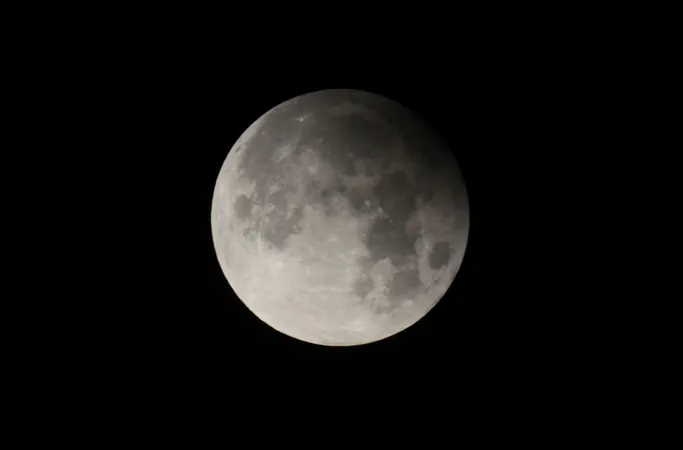
The Milky Way: A Cosmic Oddity? New Studies Challenge Its Role in Galaxy Formation
2024-11-20
Author: William
For years, the Milky Way has been the benchmark for scientists seeking to understand the formation and evolution of galaxies. However, recent groundbreaking studies suggest that our galaxy might not be the typical example researchers once believed. Instead, it could be more of an anomaly in the vast cosmic landscape.
Risa Wechsler, a professor of physics and a leader of this transformative research, emphasized the importance of recognizing that the Milky Way may not represent the general behaviors and characteristics observed in other galaxies. “The Milky Way has been an incredible laboratory for understanding galaxy formation and dark matter,” she stated. “But it’s crucial to examine similar galaxies to glean a more accurate understanding of the universe.”
To facilitate this, Wechsler co-founded the Satellites Around Galactic Analogs (SAGA) Survey, aimed specifically at identifying and analyzing galaxies with mass comparable to that of the Milky Way. Over more than a decade of diligent research, the SAGA team has cataloged 101 analogs of our galaxy, sharing their findings in a series of studies published in the November 18 issue of The Astrophysical Journal.
Understanding Our Cosmic Neighbors
The insights from the SAGA Survey reveal significant differences in the evolutionary trajectories of the Milky Way compared to its counterparts. “Our findings indicate that we cannot derive models of galaxy formation solely based on the Milky Way,” Wechsler noted. “We must expand our view to include a diverse array of similar galaxies throughout the universe.”
In collaboration with leading astrophysicists like Marla Geha from Yale University and Yao-Yuan Mao of the University of Utah, Wechsler is pioneering a fresh perspective on galactic research.
One of the significant areas of study is dark matter—an elusive substance that comprises roughly 85% of the universe’s total mass yet remains invisible to us. Dark matter influences the formation of galaxies by creating massive gravitational wells known as halos, allowing ordinary matter to coalesce into stars and galaxies.
A Deep Dive into Satellite Galaxies
The SAGA researchers focused particularly on the Milky Way's satellites—small galaxies that orbit our larger host. By employing advanced telescopic imaging, they discovered 378 satellite galaxies encircling analogs of the Milky Way. The Milky Way’s own satellite system includes the well-known Large and Small Magellanic Clouds.
The studies reveal startling findings: satellite counts around host galaxies vary significantly, yet the Milky Way appears to have fewer satellites than comparable galaxies, reinforcing its status as an outlier.
Further research into star formation trends indicated that satellite galaxies surrounding typical host galaxies continue to develop new stars, while star formation in the Milky Way's smaller satellites has ceased. This begs the question: what factors within the Milky Way might have halted star production in these smaller companions?
The Mysteries of Dark Matter
Additionally, the studies show a correlation between the proximity of satellites to their host galaxies and the cessation of star formation. As Wechsler states, “The challenge now is to unravel the role of dark matter on smaller scales, particularly regarding the faint dark matter halos around these minor satellites.”
The implications of these findings are vast, suggesting the existence of a more complex web of interactions in our cosmos than previously understood. The SAGA Survey not only enhances our knowledge of the Milky Way’s uniqueness but also encourages a more nuanced approach to studying galaxy formation in the ever-expanding universe.
In conclusion, the Milky Way might not be the quintessential model for galactic evolution as once thought, but rather a fascinating cosmic anomaly that prompts further exploration into the mysteries of dark matter and galaxy formation across the universe. What other surprises lie hidden in our night sky? Stay tuned as researchers unveil more secrets of the universe!









 Brasil (PT)
Brasil (PT)
 Canada (EN)
Canada (EN)
 Chile (ES)
Chile (ES)
 España (ES)
España (ES)
 France (FR)
France (FR)
 Hong Kong (EN)
Hong Kong (EN)
 Italia (IT)
Italia (IT)
 日本 (JA)
日本 (JA)
 Magyarország (HU)
Magyarország (HU)
 Norge (NO)
Norge (NO)
 Polska (PL)
Polska (PL)
 Schweiz (DE)
Schweiz (DE)
 Singapore (EN)
Singapore (EN)
 Sverige (SV)
Sverige (SV)
 Suomi (FI)
Suomi (FI)
 Türkiye (TR)
Türkiye (TR)